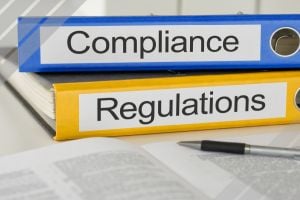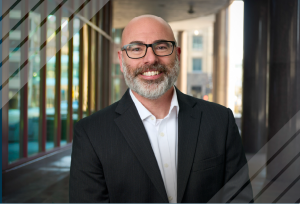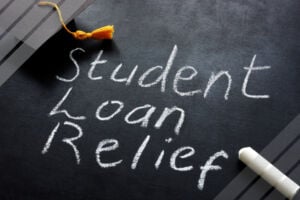 Text messaging plays an increasingly big role in the ARM industry, and some providers are no longer supporting certain industry-related message categories. Learn more about these changes and the regulatory framework around texting.
Text messaging plays an increasingly big role in the ARM industry, and some providers are no longer supporting certain industry-related message categories. Learn more about these changes and the regulatory framework around texting.
08/19/2022 11:00 A.M.
5 minute read
A one-year program from the U.S. Department of Education will help eligible borrowers in default as soon as the student loan repayment and interest deferral period ends, currently Aug. 31, 2022.
Borrowers with federal student loans in default will be able to reenter current repayment status and have other federal student aid benefits and protections restored that will increase their long-term repayment success. This will be in effect for one year after the COVID-19 relief ends, according to the department’s fact sheet on the program, known as Fresh Start.
The student loan payment relief has been extended several times under both the Trump and Biden administrations.
Of note for student loan servicers and the accounts receivable management industry, for one year after student loan payments resume, borrowers with Fresh Start-eligible defaulted federal student loans will not be subject to any collection efforts, including involuntary collection tools like wage garnishment and offset of certain government payments (such as income tax refunds and Social Security benefits).
During the initiative, the department will not charge collection costs or make any new referrals to the U.S. Department of Justice for litigation to recover defaulted debt. Simply put, eligible borrowers will have at least one year to make payment arrangements before defaulting on their debts and/or being subject to further collections efforts like most other borrowers eligible for the payment pause, according to the department.
Borrower Requirements
Fresh Start will enable approximately 7.5 million borrowers with defaulted federal student loans to return to repayment without any past due balance. However, there are opt-in requirements for borrowers eligible for Fresh Start.
Most borrowers with Fresh Start-eligible loans must make long-term payment arrangements with the department or their guaranty agency. Similar to all borrowers when payments resume, borrowers who do not make payment arrangements during the Fresh Start initiative will again be subject to default collections one year after the payment pause ends.
Borrowers who make payment arrangements will be transferred to a non-default loan servicer.
When borrowers’ eligible defaulted federal student loans are transferred to a non-default servicer, the department will remove the default status of the loans from borrowers’ credit reports.
Borrowers will have one year from the end of the student loan payment pause to make payment arrangements or notify their loan holder that they would like to transfer to a non-default servicer. After one year from the program’s start, borrowers will lose eligibility for federal student aid, and the department and guaranty agencies will resume reporting their loans as being in collections to credit reporting agencies.
Student Loan Servicer Requirements
The Fresh Start initiative restores Title IV aid eligibility for borrowers with loans in the following categories that defaulted prior to the start of the student loan repayment pause on March 13, 2020:
- William D. Ford Federal Direct Loan Program loans (Direct Loans);
- Federal Family Education Loan (FFEL) Program loans, including Federal Insured Student Loans (FISL); and
- Federal Perkins Loans (Perkins Loans) that are serviced by the Department’s Debt Management and Collections System (DMCS).
Federal student loan servicers should consider sharing the department’s fact sheet on Fresh Start with clients and consumers, and remember that collection activities will be limited once the program starts. Like during the current repayment pause, you may consider continuing to contact borrowers as long as it’s not for collection purposes or encourage them, before the program starts, to contact your agency to set up payment arrangements.
What’s Next?
In the coming weeks, the department will post separate guidance for guaranty agencies that manage defaulted FFEL Program loans.
When the Fresh Start program is in effect, all defaulted borrowers will be able to apply for additional Pell grants and federal student loans.
According to media reports, the department already has efforts underway to remove defaults and delinquency from borrowers’ credit reports.
In addition to Fresh Start, the department says it has taken steps to help every student loan borrower successfully manage their payments and avoid possible default so these borrowers will return to a more flexible repayment system than when they first defaulted. This includes improving student loan servicing, strengthening income-driven repayment plans, and discharging debts of borrowers who were defrauded by their college or are eligible for other forms of loan forgiveness. Additionally, the department is taking action to support and protect students and taxpayers from poor-performing programs. The department’s actions include reestablishing the Federal Student Aid Enforcement Office, coordinating with state and federal partners to uphold civil law and promote borrower protection, and holding investors of proprietary colleges accountable.
Biden’s 2020 campaign included support for student loan forgiveness, such as a fixed amount of cancelled debt per borrower and a proposed program to stop debt for undergraduates with federal student loans and “incomes under $125,000 per year who attended public institutions or historically Black colleges and universities (HBCUs) and private minority-serving institutions (MSIs),” ACA International previously reported.
The Biden administration has, in the meantime, adopted targeted tactics for student loan forgiveness through changes to requirements for federal student loan programs, such as the Borrower to Defense Repayment Program and Public Service Loan Forgiveness Program.
Questions remain about how much these actions would help borrowers and the economy, and what some of the other unintended consequences might be, ACA previously reported. A report from the Brookings Institution argues that only targeted debt relief policies can “reduce injustices in student loans” and broad student loan debt relief is regressive.
On Capitol Hill, ACA submitted a letter to the Senate Committee on Banking, Housing and Urban Affairs before a May hearing, outlining concerns with blanket student loan forgiveness policies and the impact they may have on borrowers and the credit-based economy.
More Information
Fact Sheet: A Fresh Start for Borrowers with Federal Student Loans in Default
Information About Restored Aid Eligibility Under Fresh Start Initiative
Federal Student Aid Eligibility for Borrowers with Defaulted Loans
If you have executive leadership updates or other member news to share with ACA, contact our communications department at [email protected]. View our publications page for more information and our news submission guidelines here.
 Text messaging plays an increasingly big role in the ARM industry, and some providers are no longer supporting certain industry-related message categories. Learn more about these changes and the regulatory framework around texting.
Text messaging plays an increasingly big role in the ARM industry, and some providers are no longer supporting certain industry-related message categories. Learn more about these changes and the regulatory framework around texting.









